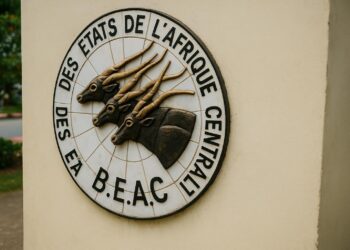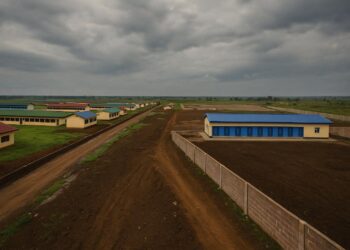Regional market blasts through the CFA 9 tn mark
The Central Bank of Central African States, BEAC, disclosed that outstanding Treasury securities across the six CEMAC sovereigns reached CFA 9 086.6 bn, about USD 15.8 bn, at the end of July 2025. The figure is 31 % higher than in July 2024, marking the market’s fastest annual expansion since its 2011 inception.
New records on the regional bourse arrive as fiscal authorities look for quick, local-currency funding while global conditions remain volatile. BEAC Governor Abbas Mahamat Tolli hailed the surge as “a confirmation that our market is no longer experimental but systemic” (CRCT communiqué, 3 October 2025).
How the numbers stack up
The stock climbed by CFA 2 153.7 bn—about USD 3.8 bn—in twelve months. Earlier data had already shown momentum: by March 2025 outstanding notes stood at CFA 8 451.8 bn, up 12 % quarter on quarter. Analysts at Ecobank Research say the market has added the equivalent of an average monthly Eurobond coupon in fresh paper.
In nominal terms, Cameroon remains the largest issuer, yet Gabon provided the biggest incremental boost during the period. Congo-Brazzaville, Equatorial Guinea, Chad and the Central African Republic all maintained multi-instrument programmes, rolling over short-dated bills while selectively tapping longer bonds.
Gabon’s front-loaded financing strategy
Gabonese issuances rose 44 % in a single month to plug a post-election cash gap and pre-finance 2026 infrastructure outlays, according to the finance ministry in Libreville. Local primary dealers point out that Gabon’s 52-week bill, priced at 4.7 %, cleared almost twice subscribed.
The move mirrors guidance from the IMF’s April 2025 Regional Economic Outlook encouraging CEMAC hydrocarbon exporters to use domestic markets to preserve foreign reserves while oil prices flatten. Fitch Ratings argues such front-loading reduces refinancing spikes in 2026, though it lengthens average debt maturity modestly.
Investor appetite still solid but coverage softens
Despite rising volumes, the average coverage ratio slipped to 63.4 % in July 2025 from 71.8 % a year earlier. The shift signals greater selectivity among banks and institutional investors as competing opportunities emerge in Nigerian and Ghanaian bills now offering double-digit returns.
Nevertheless, regional pension funds have expanded allocation mandates and foreign funds dedicated to franc-zone Africa remain net buyers. Société Générale Securities noted that the bid-to-cover on three-year Congolese paper stayed above 100 % in mid-2025 auctions, an encouraging sign for issuers planning Q4 syndications.
Macroeconomic backdrop supports issuance
CEMAC growth is forecast by the BEAC at 3.6 % in 2025, helped by stable crude output and improved logistics along the Douala-Ndjamena corridor. Inflation cooled below the 3 % convergence ceiling, allowing the central bank to keep its tender rate at 5 %, underpinning cheap bank refinancing for Treasury trades.
Fiscal gaps, however, remain wide. The IMF projects an aggregate overall deficit of 2.9 % of regional GDP, driven by increased social transfers and infrastructure spending. Domestic debt issuance therefore serves as a buffer while talks continue on extending Debt Service Suspension Initiative-style arrangements with bilateral creditors.
Spotlight on Congo-Brazzaville’s prudent stance
Brazzaville increased its outstanding securities by roughly CFA 120 bn over the review period, prioritising six-month and one-year maturities to match cash-flow seasonality tied to oil cargo liftings. The finance ministry stresses that the strategy keeps the stock below the 70 % of GDP convergence threshold.
Market participants say the Republic benefited from tighter spreads after Moody’s affirmed its B3 rating outlook stable in May 2025, citing fiscal discipline and expected proceeds from the deep-offshore Marine XII permit extension. That backdrop has supported lower average yields, now hovering near 5.2 % on one-year notes.
Secondary-market liquidity remains thin
Daily turnover on the BVMAC secondary platform averages just CFA 3 bn, according to stock-exchange data, reflecting the traditional buy-and-hold approach of regional banks. A forthcoming repo facility, announced by the CRCT, aims to unlock more trading by allowing banks to use CEMAC bills as collateral.
Standard Chartered analysts argue that liquidity will improve once the planned Central Securities Depository upgrade goes live in 2026. For now, primary auctions remain the main exit route, influencing price discovery more than screen-traded benchmarks.
Risk-reward calculus for international funds
Foreign investors attracted by a unified legal framework and a synthetic currency peg to the euro must weigh currency convertibility limits, modest liquidity and sovereign concentration risks. Yet spreads of 350 to 450 basis points over comparable EUR yields continue to draw niche frontier-market funds.
Portfolio manager Elise Noël at Amundi Frontier believes “the gradual lengthening of maturities and improved disclosure by BEAC make CEMAC paper a credible diversification play,” provided that regional authorities maintain current macro prudence and step up sovereign rating coverage.
What to watch in the coming quarters
BEAC expects issuance calendars to remain elevated through December 2025 as budgets absorb wage adjustments and infrastructure disbursements. Key data releases include the fourth-quarter monetary policy statement and a possible update to the regional debt sustainability framework.
Investors will monitor whether coverage ratios stabilise above 60 % and how quickly the proposed repo window boosts secondary turnover. Any unexpected oil-price shock or global rate spike could reignite volatility, though the region’s relatively shallow integration with global capital flows may temper contagion.












































